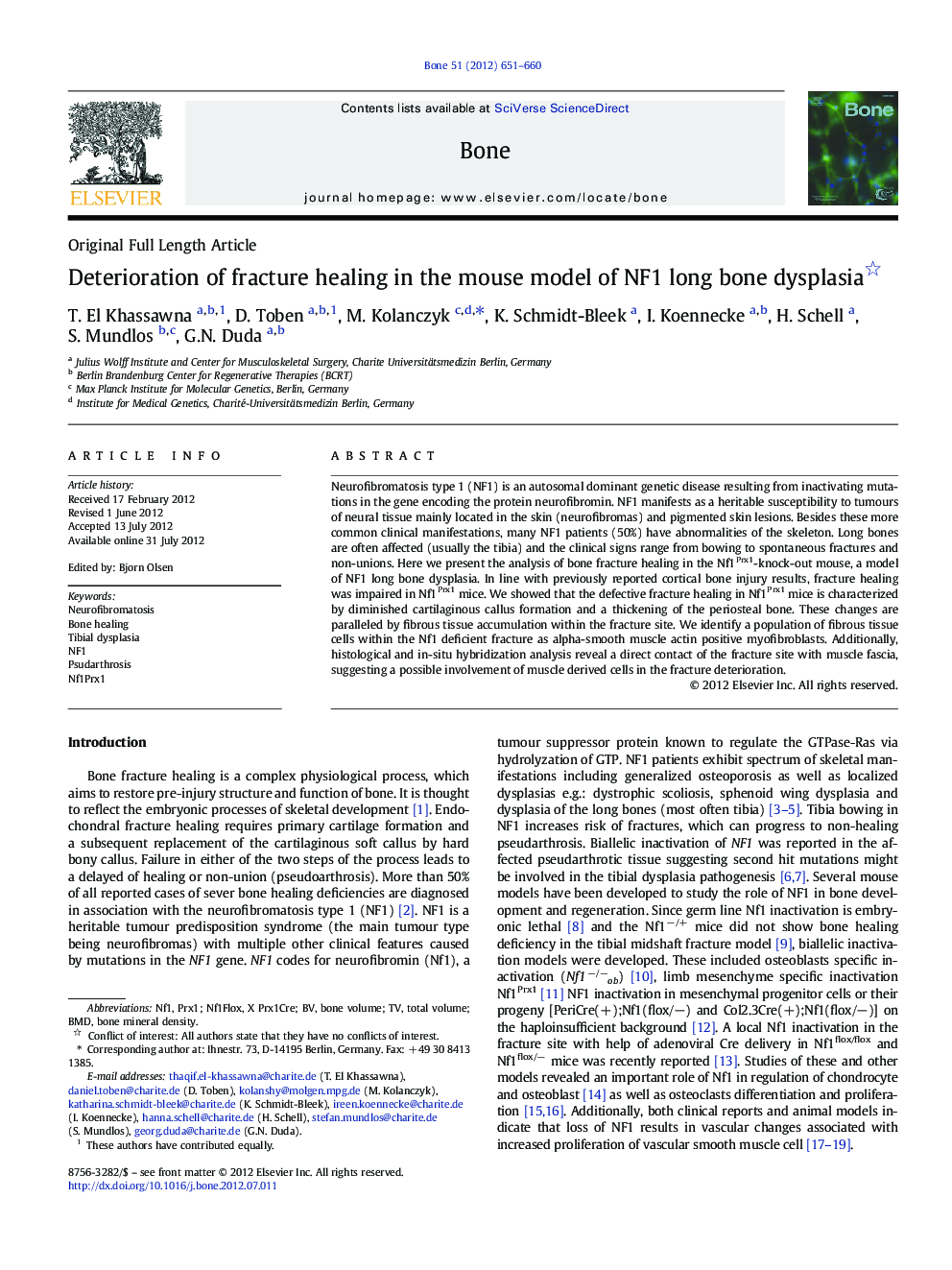| Article ID | Journal | Published Year | Pages | File Type |
|---|---|---|---|---|
| 2779391 | Bone | 2012 | 10 Pages |
Neurofibromatosis type 1 (NF1) is an autosomal dominant genetic disease resulting from inactivating mutations in the gene encoding the protein neurofibromin. NF1 manifests as a heritable susceptibility to tumours of neural tissue mainly located in the skin (neurofibromas) and pigmented skin lesions. Besides these more common clinical manifestations, many NF1 patients (50%) have abnormalities of the skeleton. Long bones are often affected (usually the tibia) and the clinical signs range from bowing to spontaneous fractures and non-unions. Here we present the analysis of bone fracture healing in the Nf1Prx1-knock-out mouse, a model of NF1 long bone dysplasia. In line with previously reported cortical bone injury results, fracture healing was impaired in Nf1Prx1 mice. We showed that the defective fracture healing in Nf1Prx1 mice is characterized by diminished cartilaginous callus formation and a thickening of the periosteal bone. These changes are paralleled by fibrous tissue accumulation within the fracture site. We identify a population of fibrous tissue cells within the Nf1 deficient fracture as alpha-smooth muscle actin positive myofibroblasts. Additionally, histological and in-situ hybridization analysis reveal a direct contact of the fracture site with muscle fascia, suggesting a possible involvement of muscle derived cells in the fracture deterioration.
